One of the best things about visiting a new destination is the chance to immerse yourself in the history of the community. Lindsborg, Kansas has an interesting history tied to the Swedish immigrants who arrived here in the spring of 1869. Even today, around thirty percent of the local population can tie their lineage back to Swedish heritage. A visit to the Old Mill Museum and Heritage Square would find us delving into the history of “Little Sweden USA”.
We want to thank Visit Lindsborg and the McPherson County Museum for their hospitality. Rest assured that all opinions are our own.
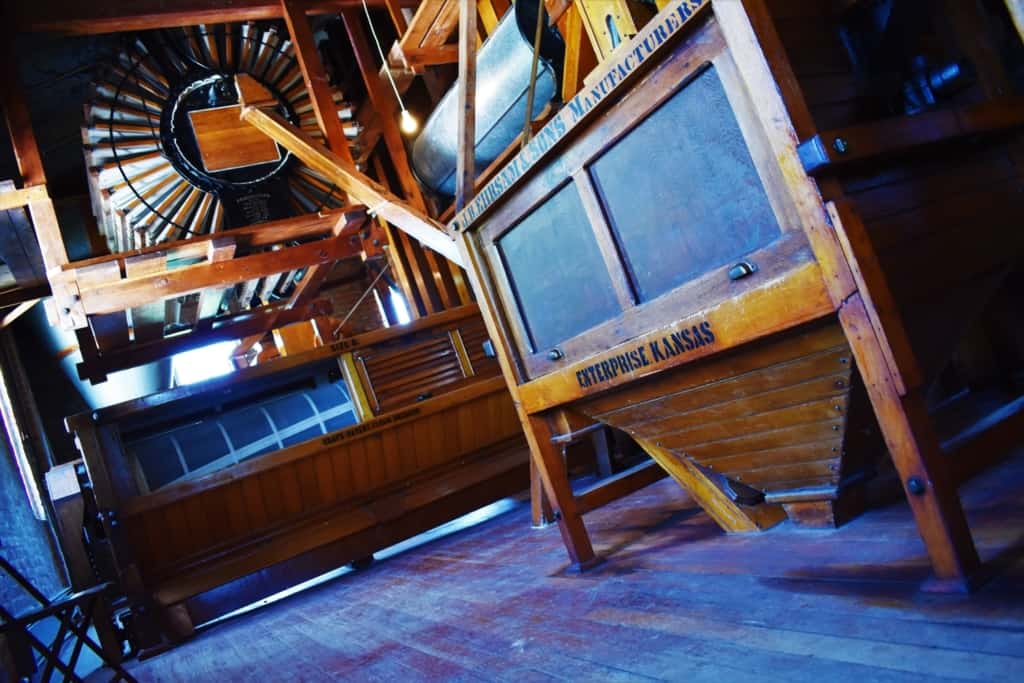
Old Mill Museum
We love that Lindsborg is such a walkable city. Settled in the heart of Kansas, the plains are the perfect place for growing crops. As we approached the McPherson County Old Mill Museum, the three-story brick structure rose up to meet us. We entered the museum, and the staff gave us a quick recap of the facilities. We decided to start in the Old Mill since the air-conditioned museum would be a nice relief on a hot July day. Inside the mill, we explored all three floors. The mill is still operated for special events but has earned a well-deserved rest since it’s a start-up in 1898.
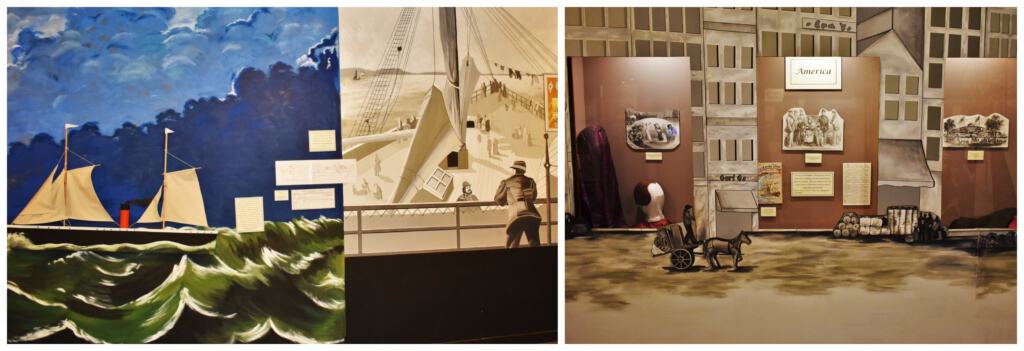
Traveling to America
The mid-day heat grew with each floor we climbed, so our visit inside the mill was curtailed sooner than we wished. Back inside the museum, we slowed our pace to soak up the cool air. The museum portion is not overly large but is designed to give visitors a feel for the immigrant’s journey. The various placards filled our minds with pictures of these early travelers crossing the Atlantic, on their way to the new world. Coming to America would have been a life-changing adventure that held no promise for success.
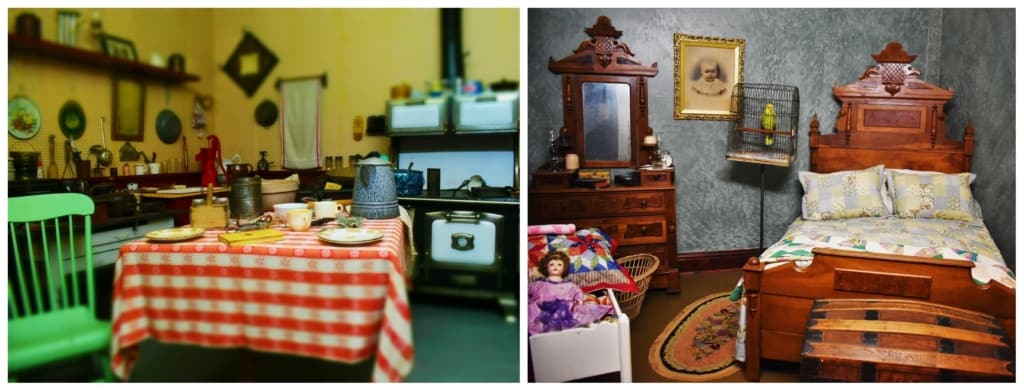
Delving Into the History
Once they arrived on the east coast, there was still the long path halfway across the continent. Can you imagine trying to transport your precious items across such an unforgiving terrain? Once they made it to Lindsborg, there was still the task of building a home. Over time, the railroad would move into the town, and access to products from other cities became easier to find. As we were delving into the history at the museum, we learned that they maintain a genealogy archive, where guests can research their family roots.
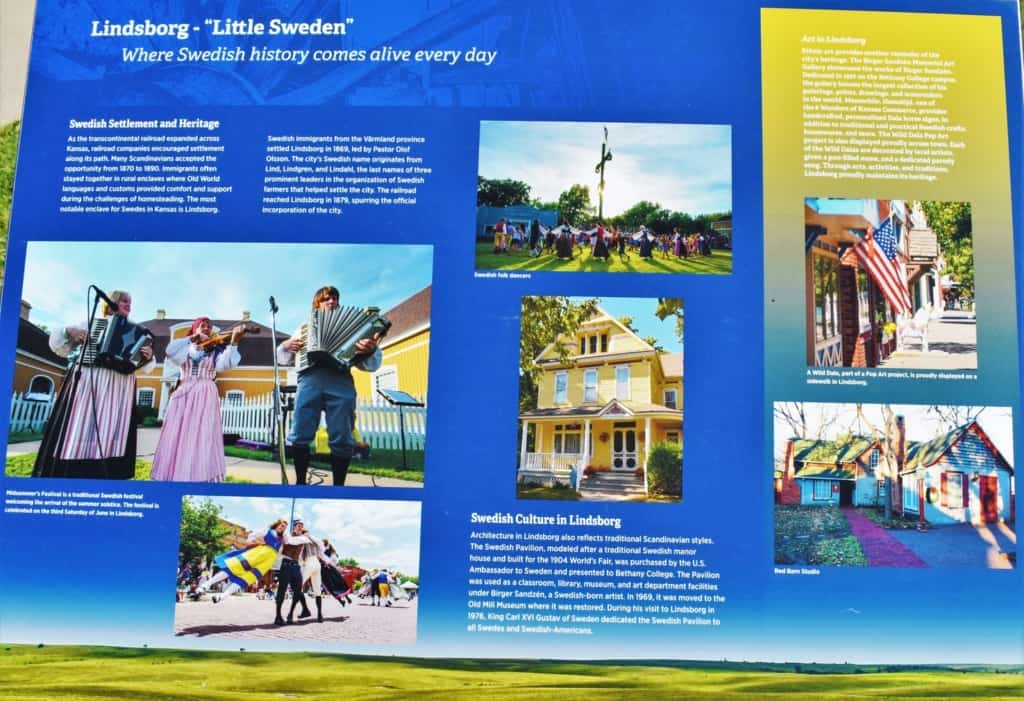
Keeping Their Culture Alive
The immigration of Swedish-born people, to Kansas, had its highest point in the late 1800s. A census showed around 200 Swedes living in the territory when it became a state, in 1865. Just 25 years later, that number would swell to over 17,000. The number would drop after the turn of the century, but these original immigrants would create an ever-increasing family lineage. Even with the change in demographics, Lindsborg still embraces its Swedish heritage. Various celebrations occur throughout the year that recognizes important parts of Swedish culture. We even found that a Swedish icon is still produced in Lindsborg (You can read more about Dala horses here.)

Heritage Square
Once we wrapped up our visit to the Old Mill Museum, we made our way across the street to Heritage Square. This is another good place for delving into the history of Lindsborg. Filled with seven historic structures, as well as a locomotive, it is open for self-guided tours.
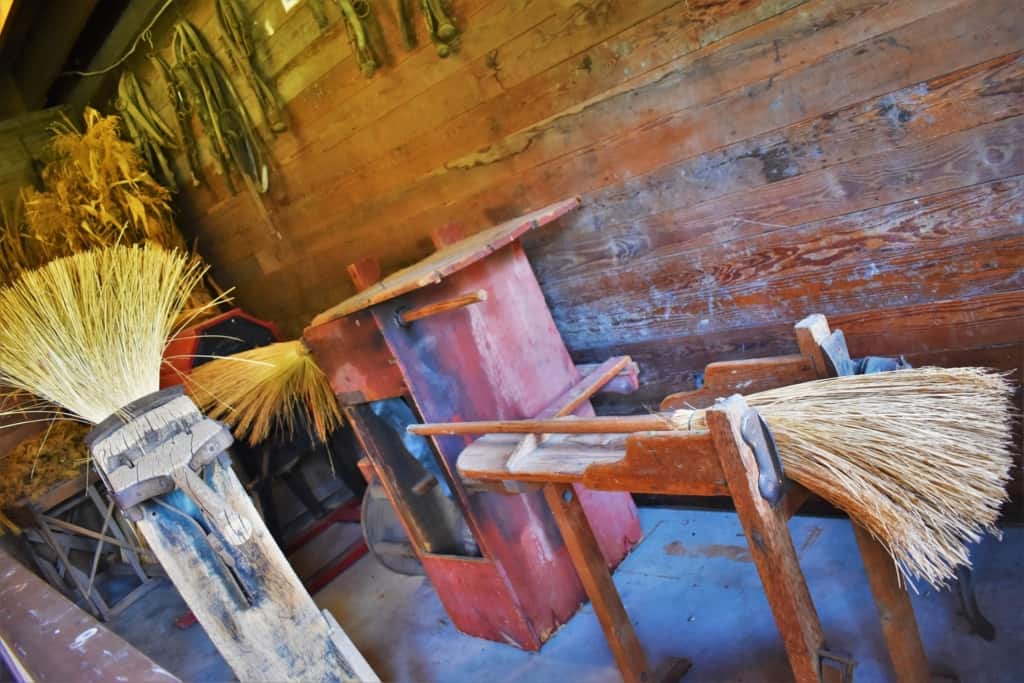
Forgotten Crafts
We walked along the boardwalk, which runs in front of each building. Stepping through the doors, we were greeted by rooms filled with the parts and tools used for various occupations. One that we both found intriguing, was a broom makers shop. It was obvious to us that someone had to have been creating this vital tool, but we never imagined how it was done. This visit gave us a better understanding of the steps required to create straw brooms.
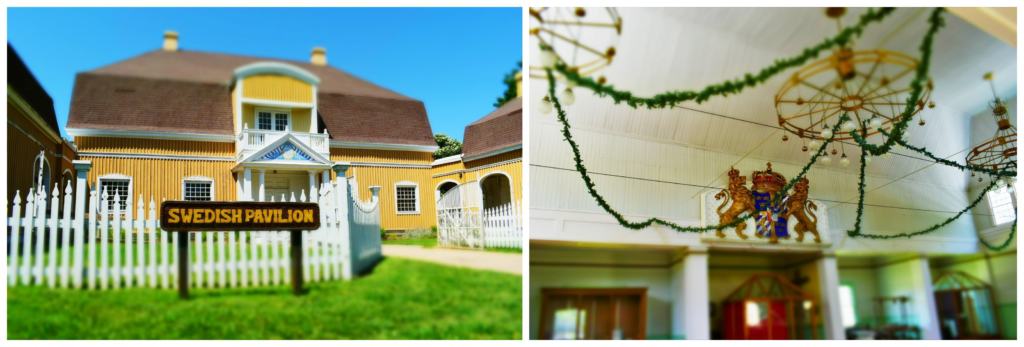
On the World’s Stage
The star of Heritage Square is the Swedish Pavilion that occupies one entire side of the space. This beautiful structure was built for the 1904 World’s Fair in St. Louis, Missouri. (We learned more about that event during a St. Louis visit here.) Once the fair finished, the pavilion was donated to Bethany College and moved to Lindsborg. In 1969, it would be moved once again, but a much shorter distance this time.
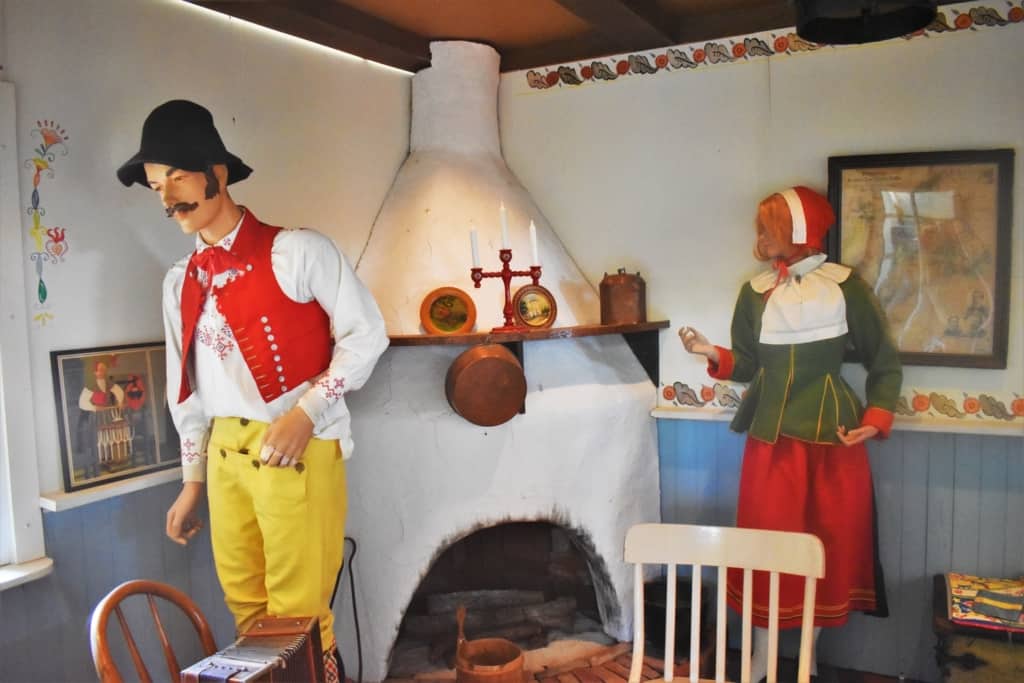
Home Away From Home
Inside the Swedish Pavilion, we found ourselves delving into the history of the Swedish people. They have collected an array of items that represent the culture and heritage of their forefathers from the Old World. This space is open to exploring, and we were enjoying all of the artifacts. Please note that the museum operates Monday through Saturday from 9-5 each day. With all of this newfound knowledge of the city’s ancestors, we were ready to enjoy more Swedish culture. How many of you have visited a World’s Fair site?


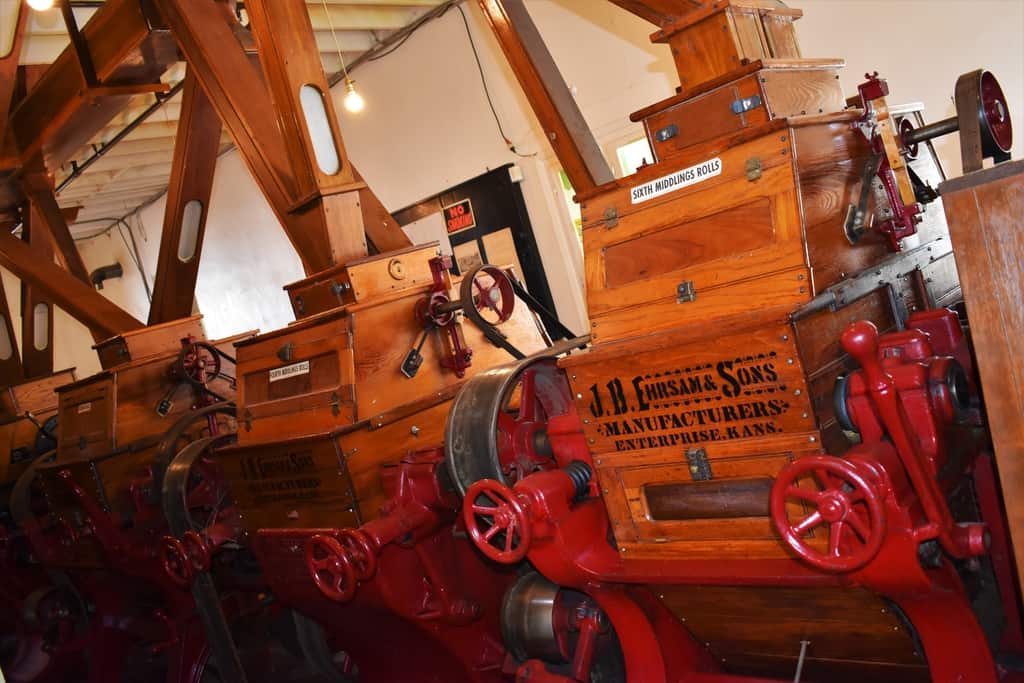
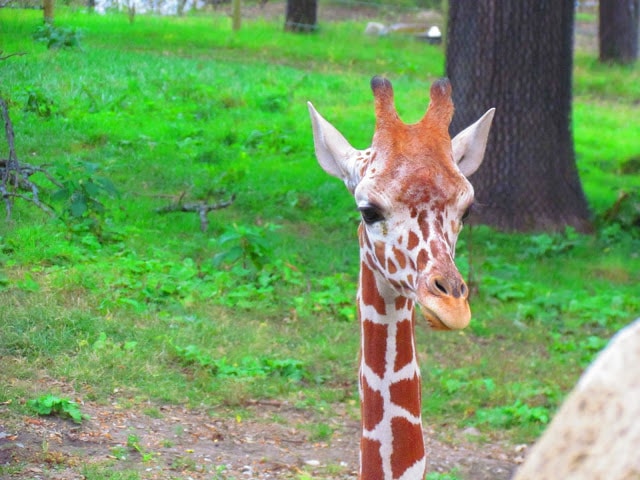

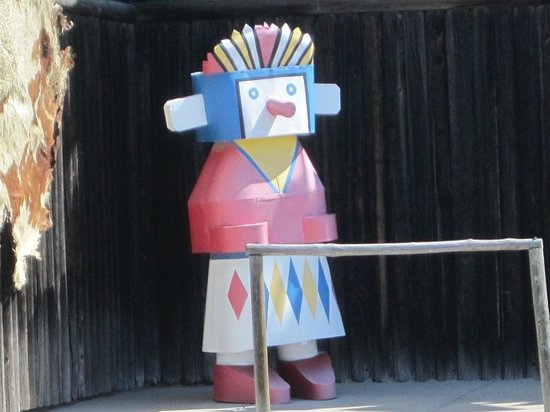
Love this era and genre of Americana. I never would have guessed that Swedish folks settled in this part of the country. Enjoyed the article.
It is interesting the things we discover as we explore across America.
Nice to see there are informative sites about the Swedish heritage. When you come to Minneapolis, be sure to visit the American Swedish Institute–and its restaurant, too.
Thanks for the tip. We love Minneapolis.
The Old Mill Museum looks awesome, and the Swedish root history is fascinating. I would have never pictured Kansas as a place for the Swedes to settle. I really think l would enjoy visiting this historical place. Thanks for sharing a great piece of American history, one that l had no idea of.
So happy you enjoyed the article. Lindsborg is certainly unique.
I didn’t realize Kansas had such a strong Swedish heritage. The Old Mill Museum looks like a fascinating place to visit!
It’s amazing what you discover when you get off the interstate.
I like to know the history of a place when visiting. The Old Mill Museum seems like a great place to learn about the Swedish roots of Lindsborg, Kansas.
We agree. Knowing the history of a destination really adds to the experience.
Susy Jordan Shaw and Brad Jordan. Your grandmother, Leona Hagstrom Chappell was born in the house next to the mill in Lindsborg, KS 1918. Her father had a bicycle business in town. Mother used to climb all over the mill,,!!! It is now a state legacy.
Interesting family connection.